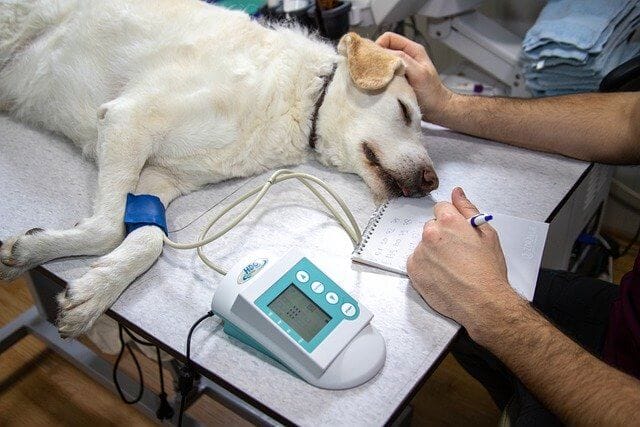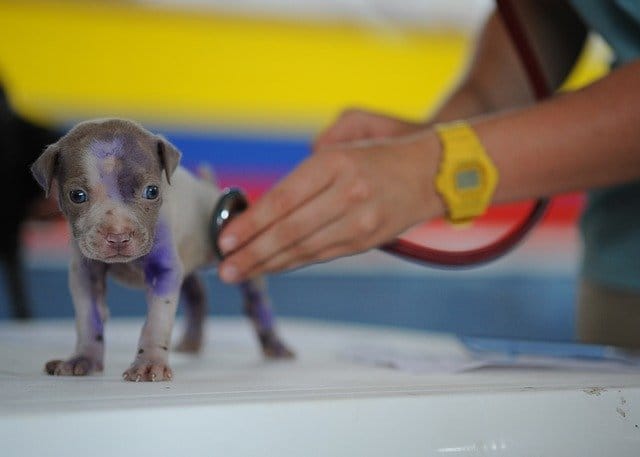Pet insurance can be a great way to protect your pet in the event of unforeseen accidents or illnesses.
But what does pet insurance usually cover?

What does pet insurance usually cover?
Pet insurance is a health insurance policy that reimburses a portion of a pet’s medical expenses.
Some insurances include a comprehensive policy that covers a wide range of health-related circumstances.
For example, if you want coverage for accidents, illnesses, and wellness care, pet health insurance plans cover these types of health-related problems:
- Unexpected injuries/accidents (like foreign object ingestion, broken bones, and poisoning)
- Unexpected illnesses (like cancer, glaucoma, hip dysplasia, parvovirus, and more)
- Common illnesses such as ear infections, vomiting, and diarrhea
- Surgery (like cruciate ligament tears, cataracts, and more)
- Pet medication
- Tests/diagnostics (like x-rays, blood tests, MRIs, and more)
- Emergency exam fees
- Surgeries, hospitalizations, nursing care, endoscopies, and chemotherapy
- Wellness procedures such as vaccinations, flea/heartworm, and spay/neuter
Comprehensive pet insurance policies will be the most expensive plans as it covers all of the above depending on the insurance.
Depending on your budget, you can also opt for a policy that covers fewer benefits. Buying a pet insurance plan with less coverage can be significantly cheaper.

For example, you may get a policy that protects only accidents and illnesses.
However, keep in mind that if you have an ‘accident-only’ coverage, you will be responsible for the entire cost of any non-accident-related medical expenses.
Does Pet Insurance cover regular vet visits for dogs?
Some pet health insurances policy includes a wellness plan that helps cover routine veterinary visits and costs.
Optional pet wellness plans, also known as preventative pet care or routine pet care coverage, may be offered on some pet insurance policies.

Typically, you’ll pay a premium for the plan and your insurance will reimburse you for routine vet visits like physical exams and pet vaccines
What does a pet wellness plan cover?
The following services may be covered by a pet wellness plan:
- Routine physical exams (such as annual checkups)
- Flea and heartworm treatment
- Basic vaccinations
Some pet health insurance plans may include wellness programs that have varying coverage amounts and costs (and your premium could be higher if you opt for more coverage).
Dental care, preventative operations like spaying or neutering, and preventive treatments are all covered in higher-tiered wellness plans.
In addition to pet health plans, traditional pet insurance comprises a variety of other types of coverage that include:
- Basic coverage also referred to as standard pet health insurance, may help pay for medical care after accidental injuries or illnesses.
- Comprehensive coverage, which may help cover costs for vet visits, prescriptions, X-rays, and lab fees, in addition to costs related to accidental injuries and illnesses.
It is important to read a pet insurance policy carefully or check with the insurer to understand what’s covered by your pet’s insurance plan.
How much of my vet bills will a pet wellness plan cover?
Depending on the plan’s coverage, a percentage or dollar amount of a veterinary bill will be reimbursed.
According to the National Association of Insurance Commissioners, most pet wellness policies are also set up on a reimbursement basis.
You’ll pay a premium for a pet wellness plan and incur upfront payment for routine vet visits, and then be reimbursed by the insurance for a portion of the cost after.

For example, if you bring Max in for his check-up, you’ll pay the services of his veterinarian that day, such as the examination and immunizations.
Once you’ve submitted the claim to the insurer, you will be reimbursed for covered costs.
Premiums, deductibles, co-pays, and limits are all common features of pet health insurance plans. These expenses will influence how much the insurer pays out.
What is not covered by a Pet Wellness Plan?
Certain exclusions may be included in a pet insurance policy. Some common exclusions may include:
- Treatment for pre-existing medical conditions
- Care related to pregnancy and/or birth
- Grooming and claw/nail trimming
It’s possible that coverage limitations exist for hereditary diseases like hip dysplasia, and that some insurers may have a maximum age threshold.
According to the North American Pet Health Insurance Association, there is typically up to a 30-day waiting period before your pet insurance plan will take effect.
This implies that any sicknesses or mishaps that happen before the waiting period expires will not be reimbursed.

Pet insurance companies usually cover certain vet visits, but they don’t all cover the same things or at the same rates.
The best way to find out how your pet’s insurance company will handle any given emergency is by reading their policy and contacting them directly with any questions you may have about coverage limits or cost-sharing arrangements that are right for your situation.
- What Are the Perfect Dog Breeds for Young Families? - July 17, 2024
- Important Things to Know Before Getting Your First Pet - June 4, 2024
- 6 Reasons to Choose a French Bulldog as Your Pet - March 21, 2024


GIPHY App Key not set. Please check settings